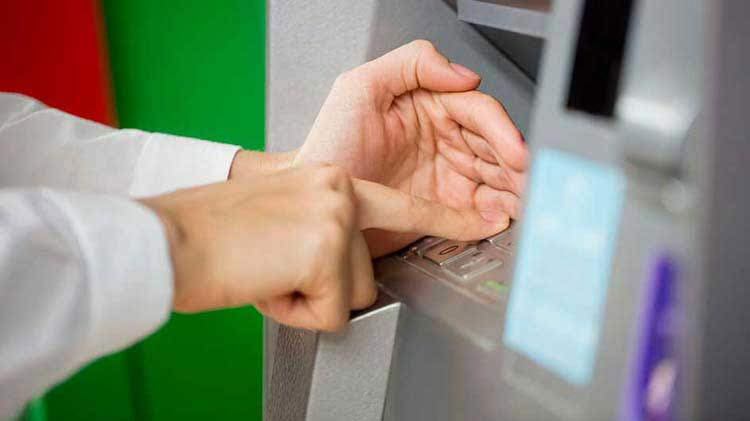Small business cybersecurity
From physical storefronts to home enterprises, it’s important to have safety guardrails in place to help protect the cybersecurity of your small business.
While large companies often have entire departments dedicated to physical and cyber security, small business owners likely have to handle these responsibilities themselves. This can include setting up alarm systems and cameras to help protect against theft and buying software to safeguard data.
Breaches for solo enterprises or small companies can have disastrous effects, especially when it comes to cybersecurity. According to the findings from the Hiscox Cyber Readiness Report, the median annual financial cost to American small businesses was more than $8k in 2023, down from $10k in 2022.
Whether you own a coffee shop or are an independent consultant, you can create a security plan to help protect your information and your customers' assets.
Start with the basics
Networks used for business, at home or in a physical location, should require a strong password and authentication to deter data breaches. To help protect your physical assets, consider a security monitoring system. There are various installation options either by a company or with cameras and monitors you install yourself.
- Software updates. Check for regular updates as they will give you the latest security features.
- Device encryption. This adds another layer of protection by converting your data into code that isn’t readable by outside sources.
- Multifactor authentication. Opt-in for authentication features like two-factor authentication when available. These add an extra security layer to the login process, such as a security key or a one-time code received by text.
- Antivirus software. These programs can help stop some of the most prevalent cyberattacks against businesses.
Understand common threats
Small businesses should be prepared for the following types of attacks:
- Malware — is malicious software that can disable or damage computers and leave your system vulnerable to unauthorized access. It can result in stolen sensitive data, disrupted operations, financial loss and reputational damage.
- Ransomware — is a type of malicious software that holds a computer system hostage until a ransom is paid. The severity of the attack depends on how much leverage the attacker has against the victim.
- Social engineering — attackers deceive employees into divulging confidential information. This can happen in person or remotely.
- Phishing — is a type of social engineering where attackers masquerade as a reputable source to trick victims into giving away sensitive information like usernames, passwords or bank information. These attacks can happen in person, over the phone or through email.
- DDoS attacks — these attacks overwhelm online services with traffic from many sources, often using bots. This can shut down websites or point-of-sale systems, causing potential revenue loss.
Responding to ransomware attacks
If you experience a ransomware attack:
- Do not respond. Avoid responding to threats or providing passwords or sensitive information to attackers.
- Isolate the device. Disconnect the affected device from the internet or power source.
- Contact authorities. Report the attack to the relevant authorities for guidance and assistance.
Protect your network
Now that we’ve established what these attacks look like, let’s consider what steps you can take to start strengthening your small business network security.
- Enable firewall security. This can usually be adjusted through your router’s administration panel which can be accessed via your web browser.
- Encrypt your Wi-Fi network and hide the router away from public access. You can also adjust the settings to hide the network name from broadcasting to others.
- Use different computers. One for payment systems and one for day-to-day internet business activity.
- Change all of your passwords every three months.
Protect sensitive data
Some data is more precious than others. Take extra precautions to help protect your highest priority information like credit cards and other types of financial information.
- Create backups. Store multiple backups of your important data using a secure cloud service and an offline external hard drive.
- Update regularly. Ensure your backup files are up-to-date by scheduling regular updates, and consider enabling automatic updates if available.
- Restrict access. Limit physical access to computers and hard drives that contain sensitive information.
- Replace aging drives. If data is stored for an extended period, replace physical drives every few years to maintain security and prevent data degradation.
Train employees on cybersecurity basics
Inadequate cybersecurity training can make your organization vulnerable to attacks, particularly those that prey on employee naivety. To help mitigate this risk, consider training your employees on the following:
- Password policies — enforce strict password requirements for company computers and personal devices that access company information.
- Internet usage — establish clear internet usage guidelines and specify penalties for cybersecurity policy violations.
- Data handling — create behavioral rules for handling and protecting customer data and sensitive information.
- Social engineering — educate employees about social engineering attacks and create policies for sharing sensitive information between team members.
- Access control — limit employee access to data and information on a need-to-know basis.
- Software installation — ensure employees do not install software onto work devices without permission.
Have a game plan
When under attack, quick action is essential to help prevent the situation from escalating.
Begin by thoroughly assessing the damage to understand the scope and severity of the attack. Although hackers can be elusive, taking these steps may increase the likelihood of recovery and strengthen defenses against future attacks.
You may want to develop a plan to preserve data, maintain business operations and manage customer communication during an attack. Consider the specific requirements for different types of attacks, such as malware or phishing, and create a general plan for unforeseen scenarios.
Remember that different attacks may necessitate different responses. For a malware attack, consider consulting an IT professional to assess and repair the damage. For a phishing attack, you may want to immediately inform employees of the attacker's tactics to prevent others from being deceived.
Boost card reader safety
Whether using a traditional credit card machine or a mobile reader, securing credit card data is essential to protect customer information. Maintain up-to-date software; those fixes often help address security flaws. If you haven't already transitioned to an EMV-compliant device for reading chip cards, consider doing so for an added layer of protection. Some customers are also leaving their cash and wallets at home — instead using smartphones for retail purchases with a built-in mobile wallet.
Reassess your small business cybersecurity
As your business changes, your security and cybersecurity needs may change, too. Set a time on your work calendar — every six months or yearly, for example — to re-evaluate your assets and potential threats to data.




